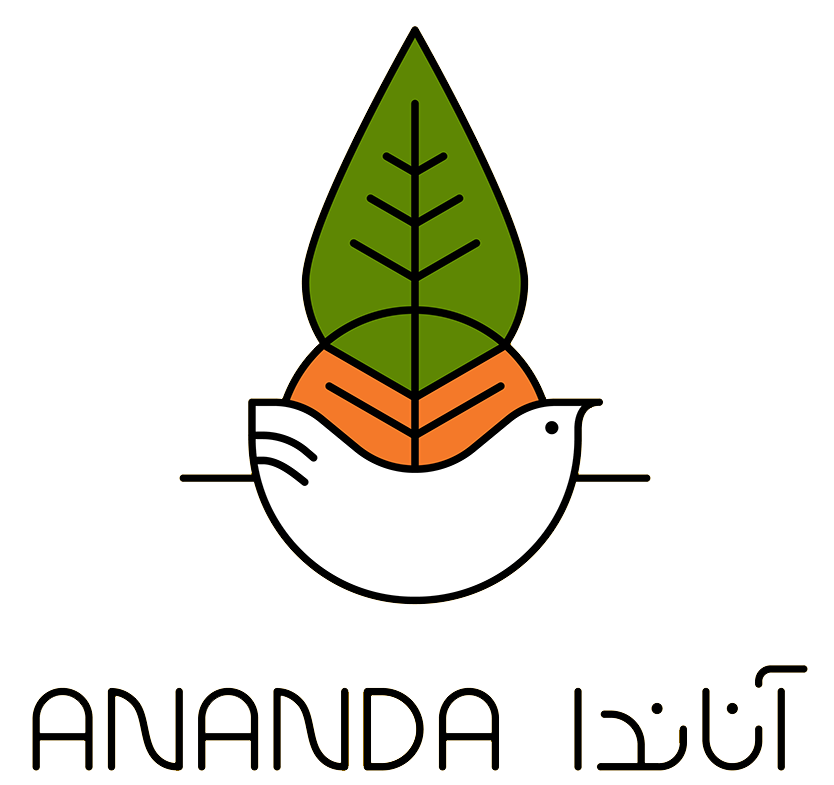A Day in Ayurveda, From Morning to Night
By Setareh Kiumarsi
Do you want your life to take on the color and fragrance of Ayurveda? How about defining a healthy, simple, Ayurvedic routine for your day? What do you think an Ayurvedic day looks like? How should you start your day?
Ayurvedic Morning Rituals
Try to start your day by 6–6:30 AM at the latest. Why so early? Read the reason here. How about tending to your body and soul in an Ayurvedic way before breakfast?
Oral Care
Tongue cleaning – Daily Ayurvedic routine
When we wake up in the morning, our mouths feel unpleasant and smell bad… Why? … Because part of the toxins that accumulate in our digestive tract during the night due to overeating or poor eating in previous days collect on our tongue. In fact, our mouth becomes full of foul-smelling bacteria… What’s the best way to get rid of these bacteria?
As a first step, to remove the bacteria stuck to other parts of the oral cavity, do oil pulling with sesame oil or a 50/50 mix of coconut oil and sweet almond oil.
How? Swish about 1–2 tablespoons of oil in your mouth for a few minutes and then spit it out… (Be careful not to swallow or gargle the oil). This allows the bacteria and toxins to stick to the oil molecules and be expelled from your mouth. What’s the next step? After oil pulling, it’s good to rinse your mouth and gargle with a little salt water or clove tea.
In the next step, use a spoon or tongue scraper to thoroughly clean and scrape the coating off your tongue 7 to 14 times.
Nasal Care
After cleaning your mouth, it’s time to care for your nose. If you usually have post-nasal drip and a stuffy nose in the morning, rinse your nose with a Neti pot or saline solution 2 to 3 times a week. This will not only remove the accumulated phlegm in your nose and sinuses, but also cleanse your third eye chakra and eliminate the toxins around your eyes.
If your nose is usually dry, apply a little sweet almond oil to your nostrils in the morning. If your constitution is very hot, use coconut oil or olive oil instead of sweet almond oil.
Eye Care
Morning rituals and eye washing – Ayurvedic routine
Next, tend to your eyes. In ¼ cup of cooled boiled water, dissolve a pinch of salt (preferably pink Himalayan salt) and 1–2 drops of natural honey; pour it into a small bowl, open and close your eyes in it, and wash your eyes (they may sting a bit… don’t worry). Then soak a cotton pad in rosewater and apply it to your eyelids.
What else? Now do some eye exercises. Sit comfortably on the floor or a chair; first look to the left, then to the right. Do this 3 times. Now look up at the ceiling and then down at the floor; do this 3 times as well. Now roll your eyes 3 times clockwise, then 3 times counterclockwise. Then focus for a few seconds on the farthest point in the room and then on the tip of your nose. Next, rub your palms together firmly a few times; place them over your eyes, open your eyes, and gaze into the darkness created behind your hands for 30 seconds.
Lastly, bring your index, middle, and ring fingers together and gently massage around your eyes and over your sinuses in circular, clockwise motions.
Ayurvedic Facial Care
The face, like the soles of the feet and palms, is full of energy points (Marma points), each of which is related to a specific organ (like the liver, spleen, respiratory system, reproductive system, etc.), and stimulating them helps regulate the function of that organ. By using Ayurvedic therapeutic facial masks daily, you stimulate each of these points and thus support your body’s health. To make a homemade face mask, mix the following powdered herbs in the given ratio:
Ayurvedic face mask:
Clove (3) + Cinnamon (1) + Neem (3) + Myrtle (1)
Mix 1–2 teaspoons of this powder with a little warm water to form a loose paste. Apply this paste to the face. Wait 20 minutes, then wash your face. After that, soak a cotton pad in rosewater and dab it onto your face. If you don’t like the scent of rosewater, use fresh aloe Vera gel. Also, apply a bit of sweet almond oil inside your nostrils.
In the initial uses of the face paste, you might experience a strong burning sensation. The skin may also become red and inflamed for 30–60 minutes after application. This inflammation and stinging are normal and will decrease with regular use.
Apply this paste to the entire face (including the eyelids) and neck, but avoid the temples and the space between the eyebrows (the sixth chakra).
You can use this face paste 1–2 times a day, and any time during the day. However, the best time to use it is in the morning after waking up, as it refreshes the mind and helps shake off drowsiness. That’s why it’s best not to use the face paste right before bedtime.
Morning Bowel Movement
Now it’s time to care for your intestines.
Morning rituals and elimination – Ayurvedic routine
First, mix a few drops of lemon juice and a pinch of salt in a glass of warm water and drink it. This promotes downward movement in the digestive tract and helps bowel movement. Now go sit on the toilet. If you have a squat toilet, perfect; if you have a Western toilet, place a stool under your feet to create a squatting posture (this makes bowel movements easier).
Now take deep breaths; focus on your anus. With each inhale, consciously relax the anal muscles, and with each exhale, contract them. At the same time, massage around your navel in circular, clockwise motions. Avoid using your phone, checking social media, or reading books or newspapers during this time and focus entirely on the process of eliminating toxins from your body. Give your body time and trust your intestines; gradually, your bowels will learn and get used to eliminating waste every morning.
Constipation issues? Read Ananda’s posts on constipation and home remedies.
Morning Body Massage
What’s the next step? Time for oil massage. Which oil to use?
Morning rituals and oil massage – Ayurvedic routine
*** If you have a cold constitution and are slim with a small frame… use sweet almond oil or sesame oil.
*** If you have a cold constitution and are overweight… use black seed oil or mustard oil.
*** If you have a hot constitution… use coconut oil or olive oil.
*** If you suffer from chronic skin conditions like eczema, hives, skin rashes, etc.… use castor oil.
Massage your entire body with oil… massage joints in circular, clockwise motions and limbs in back-and-forth strokes (e.g., massage your wrist in a circular motion and the area between wrist and elbow in a linear motion). If you often have post-nasal drip, catch colds easily, or suffer from respiratory issues, don’t oil the face and chest areas much—just massage them.
After the massage, get into a hot bath or under a warm shower. Massage your body again in the bath. The steam opens your skin pores and allows the oil to penetrate deeply into the bones.
If your skin is clean, there’s no need to soap it; the top layer of oil will wash off with warm water, but it’s good to let a bit of oil remain on the skin. If your skin isn’t clean, scrub it with a bath mitt and then lightly oil it again after the bath. Remember, our skin, especially in the dry autumn season, loves to stay a bit oily and moisturized.
Morning Yoga as Part of an Ayurvedic Day
Now it’s time for some light yoga. Do you know why?
Morning rituals and yoga – Ayurvedic routine
Because many yoga asanas (especially those involving twists) are designed to activate the digestive fire by contracting and expanding the muscles around the digestive tract. Simply put, they “squeeze” the liver, stomach, pancreas, and intestines to secrete bile, hydrochloric acid, and digestive enzymes. Thus, they prepare the digestive tract to receive the day’s meals.
If you’re training with a yoga instructor, even better; ask them to teach you a morning routine based on your constitution. If not, do 6–12 rounds of Surya Namaskara (Sun Salutation) and 6–12 repetitions of Marjariasana (Cat Pose). If your constitution is very hot, do Chandra Namaskara (Moon Salutation) instead of Sun Salutation (These asanas are best learned from an instructor; if you don’t have access to one, you can find many tutorials by searching their names online or on YouTube).
Ayurvedic Breakfast
What should I eat for breakfast? When and how much? Read the answers here and here.
Alongside your breakfast, instead of caffeinated drinks (like coffee or black tea), drink a glass of digestive or energizing herbal tea to wake you up and support your digestion. By the way, why shouldn’t we consume caffeine? What’s life like without caffeine? How can we eliminate caffeine from our lives? Read the answers here.
Morning Snack
Fruit salad is an Ayurvedic snack
Two hours after breakfast, drink a glass of digestive tea every hour. If you don’t have access to digestive tea, drink a glass of warm water with a few drops of lemon juice, a slightly heaped teaspoon of honey, and a pinch of salt every hour. This will stoke your digestive fire and aid your digestion.
Around 10 AM, pay attention to your hunger. If you’re hungry, enjoy a healthy snack such as the following:
*** A bowl of fruit salad or one or two fruits (e.g., a persimmon with a sweet lemon) with a bowl of cooked apple
*** Ojas drink (Read the recipe here)
*** 10 soaked and peeled almonds + 1 teaspoon honey + a pinch of cardamom + a pinch of rose petals + a cup of digestive tea
*** Avoid cakes and biscuits for your morning snack.
*** If you’re not hungry, it’s better not to eat anything and instead drink a cup of digestive tea or warm water with lemon juice and honey.
This concludes Part 1 of this article. Follow the next post for the rest of the Ayurvedic day rituals, from lunch to bedtime.
Lunch, Ayurvedic Style – Eating Zen
Remember that in Ayurveda, lunch is considered the main meal of the day. Just as the sun is highest in the sky between 11 AM and 1 PM and sunlight reaches its peak, our digestive fire is also at its strongest and ready to digest the main meal. So be sure to eat lunch between 11 and 1 (at the latest by 2). After 2 PM, digestive fire weakens, and digesting a heavy meal becomes very difficult for the digestive tract.
Now think about your usual lunch plate. It typically contains 15–20 spoonfuls of rice with a large piece of meat, chicken, or fish. Alongside it, you may add a few spoonfuls of yogurt and eat a piece of bread to feel full. Immediately after the meal, you may eat a dessert, thinking it will help digestion.
The combination and proportions of the foods mentioned above make the lunch meal very heavy and hard to digest. Try to follow the guidelines below to digest and absorb your main meal more effectively:
Lunch “Do’s”
Empty plate, light lunch – Ayurvedic style
*** About 30% of your plate should be rice (maximum 4–5 tablespoons) or bread (maximum one palm-sized piece). Consume rice drained and spiced. If you’re using bread, make sure it’s whole grain, multigrain, or gluten-free. If you’re very thin and want to gain weight, increase rice to 7–8 tablespoons and cook it as spiced pilaf.
*** About 20% of your plate should be protein (about half a palm in size). For example, about 1/3 of a chicken breast or 2–3 small pieces of meat. If you’re vegetarian, this 20% can be a vegetable stew containing a small piece of cheese, 2 tablespoons of yogurt, or 10 soaked and peeled almonds (or pistachios).
*** About 50% of your plate should be fiber-rich foods like digestive salad or fresh herbs (e.g., parsley and basil), or sautéed or steamed vegetables. If you’re using fresh herbs, season them with a bit of lemon juice, olive oil, salt, and thyme. If you’re using cooked vegetables, maintain a proper balance between warm and cool vegetables. If you’re very thin and want to gain weight, reduce the vegetables to 30%.
Lunch “Don’ts”
*** Don’t overeat. Place the palms of your hands together to form a bowl, this is the volume of your stomach. So everything that enters your digestive system at lunch (including main dish, salad, and sides) should fit into a regular plate. Learn the correct eating etiquette. Eat slowly, use a teaspoon instead of a tablespoon, and chew each bite thoroughly before swallowing.
*** Don’t combine rice, bread, and potatoes in one meal; this combination is extremely heavy and hard to digest.
*** If your food contains meat, chicken, fish, or eggs, never eat yogurt or cheese alongside it. Also avoid dishes that contain milk or cream. Dairy is very sticky and phlegm-forming, and its combination with meats becomes toxic and hard to digest.
*** Avoid drinking ice water, soda, or cold, salty, thick buttermilk with your meal. Remember, regular buttermilk with food is an enemy of digestion, but digestive buttermilk acts like a digestive nectar and helps digestion.
*** Avoid sugary and heavy desserts after meals. For proper dessert etiquette and timing, read here. If you feel the need for something sweet after your meal, top 5–10 soaked and peeled almonds with 1–2 teaspoons of honey, a pinch of cardamom, and a pinch of rose petals and enjoy.
Afternoon Snack Ayurvedic Style
Suppose you had lunch around 12 to 1. If you feel hungry around 4 to 5 PM, have one of the following snacks:
*** A whole grain biscuit or slice of whole grain cake with a cup of digestive tea
*** A bowl of fruit salad or one or two fruits (e.g., a persimmon or tangerine with a sweet lemon), or a bowl of cooked apple
*** Or 10 soaked and peeled almonds + 1 teaspoon honey + a pinch of cardamom + a pinch of rose petals + 1 cup of digestive tea
If you’re not hungry, have one of the following Kapha-reducing snacks instead:
*** A glass of carrot juice
*** A glass of vegetable smoothie (Read the recipe here)
*** 1 grated carrot + 2 pinches cardamom + 1 pinch rose petals + 1–2 teaspoons honey
*** A bowl of cooked apple
Ayurvedic Dinner
Follow two important rules for dinner:
1 — Eat dinner around 6 (no later than 7). Why?
If you eat dinner late and go to bed immediately afterward, your body becomes horizontal, digestion is disrupted (read more about the harms of sleeping right after eating here), and the digestive tract becomes full of bad phlegm and toxins.
2 — It’s very important that dinner includes fibrous vegetables (like carrots, spinach, parsley, basil, leeks, bell peppers, celery, beets, etc.). Reduce carbohydrate volume and increase vegetables. Why? Because vegetable fiber acts like a sponge that absorbs and digests undigested phlegm that has accumulated in your digestive tract during the day.
So what should we eat for dinner?
*** Make a bowl of digestive salad. If you’re vegetarian, add some nuts (e.g., 10 soaked and peeled almonds or 10 pistachios or 1 tablespoon pumpkin or sunflower seeds) and 2 tablespoons of cooked quinoa. If you’re not vegetarian, add some animal protein (like chicken, turkey, a boiled egg, etc.) to the above mix. Eat this salad with a cup of digestive buttermilk.
This combination is very suitable for people with excess weight or Kapha dosha imbalance. If you’re thin or have dominant Vata dosha, eat the salad with a palm-sized piece of whole grain or gluten-free bread.
*** A bowl of vegetable soup or stew. Try to make 50–70% of the soup or stew vegetables (the ratio of warm to cool vegetables should be 3 to 1. For more on warm and cool vegetables, click here). The remaining 30–50% should be protein and a light grain (like quinoa, oats, buckwheat, bulgur, or rice).
Ayurvedic Bedtime Routine
*** Around 7 PM, drink a cup of calming herbal tea.
*** If you ate dinner early and feel hungry before bed, drink a cup of warm spiced milk with honey (heat one cup of milk with 2 pinches of cardamom, 1 pinch of nutmeg, and 1 pinch of rose petals; before drinking, add 1 teaspoon of honey).
*** If you’re not hungry before bed, drink a cup of digestive buttermilk… This helps digestion and improves sleep quality.
*** Go to bed before 10 PM (for more on proper sleep and wake times, click here and here).
*** At least 30 minutes before bed, turn off and remove mobile phones and electronic devices from your sleeping area.
*** If you have a bathtub, soak in warm water for 15 minutes before bed. Add a little rose essential oil to the bath water. If you don’t have a tub, do a warm steam facial for 5–10 minutes instead.
*** Before sleeping, massage the soles of your feet with oil suitable for your constitution (as explained in Part 1). Also lightly oil the inside of your nostrils and your crown.
This concludes the rituals of an Ayurvedic day. We hope that by following these tips, you’ll be kinder to your body and enjoy full health.
Please be sure to credit the author, Setareh Kiumarsi, when sharing or republishing this article, which was written with love and the hope of well-being for all.






